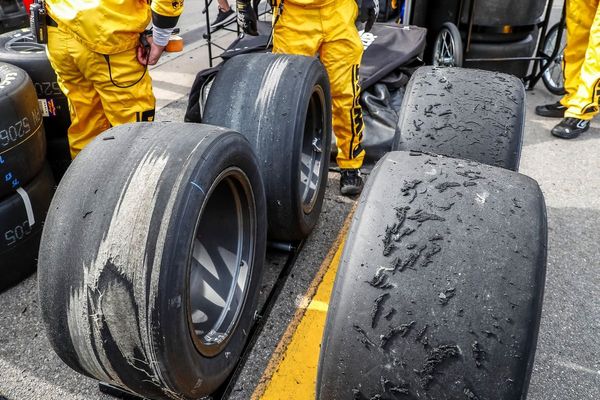
Damn the torpedoes if you like, as Milwaukee Brewers pitcher Trevor Megill did after the New York Yankees routed his team on the opening weekend of the season, but the torpedo-style bats are not worth the hysteria that home run show in the Bronx created. With the way major leaguers are hitting—or more to the point, not hitting—torpedo bats are an interesting innovation but not the game-changer they were cracked up to be.
The major league batting average through Tuesday was .237, down from .242 at the same point last year and .249 after a similar number of games in 2023. While torpedo madness took root, a trend continued that quietly is having a greater impact on offense: pitchers are emphasizing “pitch shaping” as power breaking pitches with late movement replace curveballs.
From 2016 to 2024, 20,802 curveballs disappeared from the game. Where did they go? They were replaced by cutters, sweepers and sliders.
Some highlights of a 10-season snapshot of MLB’s lean into late movement:
- Cutters outnumbered curveballs last year for the first time. Just nine years ago, pitchers threw twice as many curveballs as cutters.
- Curveballs are becoming almost extinct in late innings as a parade of fastball/slider power relievers take over. The Detroit Tigers, for example, have thrown one curveball after the sixth inning this season.
- From 2016 to 2024, curveballs declined 25.6%, while sliders, cutters and sweepers went up 50.3%.
- The Tampa Bay Rays have the fastest staff of all time, with an average fastball velocity of 95.5 mph. But they throw those four-seamers and sinkers only 43% of the time. They throw 35% cutters and sliders (including sweepers), sixth most in MLB.
- The Miami Marlins are at the extreme edge of this trend toward pitch shaping at higher velocities. They throw the fewest fastballs (36%) and the most cutters and sliders (43%), essentially flipping their percentages from last year (47% and 34%, respectively).
Overall pitch velocity this year is 89.2 mph, the highest in recorded history and the fifth straight year it has increased.
Torpedo bats help hitters—some. They are perhaps the first innovation to the hitting area of the bat since maple (and birch) began to replace ash as the preferred wood of choice. They move the sweet spot of the barrel slightly away from the end (closer to the hands). Like high-tech, custom-fitted shafts and driver heads in golf, they succeed as a matter of fit more than an across-the-board performance enhancer. As Davis Schneider of the Toronto Blue Jays theorized, by moving the sweet spot closer to the hands, the torpedo bat seems best suited for players with short arms, those who stand close to the plate or players who tend to get jammed on inside pitches.
Torpedo bats will drive the custom bat fitting market more than they will drive an explosion of offense in the major leagues. The hysteria about them was due to a perfect attention-getting storm: it was opening weekend, it was the Yankees, it was Yankee Stadium and it was the Brewers, who had nine pitchers on the injured list and have the second-lowest average four-seam fastball velocity in MLB (93.3).
Torpedo-swinging Anthony Volpe, Cody Bellinger, Paul Goldschmidt, Jazz Chisholm and Austin Wells combined to hit nine homers against the Brewers. Was it the bat or the pitches? Check out the pitch location of their nine home runs:

Seven of those nine home runs were hit off elevated, below-average velocity fastballs (87-93 mph). Hitters slug .427 against the average fastball. But they slug .532 against below average heaters middle-up in the strike zone.
Even with torpedo bats, hitting keeps getting more difficult. The lean toward late movement at higher speeds is part of it. Here is the 10-season snapshot of the growth of sliders (which includes sweepers) and cutters as curveballs decline:

Pitch shaping is a term that describes how pitchers defeat swing paths and confuse hitters by making the ball move late to the edges of the zone. As pitchers turn to labs to create these “designer pitches” that play off one another, the old fastball/curveball combination is disappearing as the foundation of pitching. Paul Skenes throws seven pitches, not including a cutter he worked on in spring training to fill a very narrow niche in his pitch-shape arsenal. He has thrown four curveballs in three starts this season.
Garrett Crochet is throwing more cutters and fewer fastballs, despite having the best fastball from a starting pitcher last year. Logan Gilbert reached the big leagues throwing 62% fastballs. Over the past two seasons he has thrown more sliders than four-seamers.
Merrill Kelly throws six pitches, none more than a third of the time. Spencer Schwellenbach throws six pitches, all at least 10% and none more than 31%. Nick Martinez throws six pitches, none more than 26% of the time. When everybody throws hard, pitch shaping trumps velocity when it comes to the cool factor.
“What I’m seeing,” said one manager, “is pitchers mixing pitches just for the sake of mixing. I’ve seen a bunch of mistakes just because they get hung up on mixing pitches instead of throwing the right pitch.”
The mix of pitch shapes forces more difficult swing decisions for the batter. The current master at pitch shaping is Zack Wheeler. After adding a sweeper in 2023 and a splitter in 2024, Wheeler has six pitches he can move in different directions to all four hairlines of the strike zone. Here is a look at his variety of pitch movements:

Curveballs are hard to hit (.215), but they are also hard to master. More pitchers are getting to the big leagues now because they throw hard, and sliders and cutters tend to be variations off the fastball. The decline of the curveball is precipitous in the late innings of games, when power rules.
Pitch use by innings, MLB 2025
Compared to how baseball was played in 2016, the drop in curveballs is much more pronounced in the final three innings (9% then to 4.1% now) than in the first three innings (11.7% to 8.7%).
Let’s use the Los Angeles Dodgers as an example. They are defending World Series champions and a cutting-edge organization. Look at their pitch usage in the postseason last year by innings.
Dodgers pitch use by innings, 2024 Postseason
Los Angeles threw only 26 curveballs after the sixth inning in the entire postseason. And the Dodgers are throwing even fewer this year with their power-packed bullpen:
Dodgers pitch use by innings, 2025
Is this power-based endgame strategy working? Absolutely. It’s never been harder to get a hit in the last three innings than it is this year (.228). Yes, you can issue all the small sample size disclaimers you want. We’re two weeks into a 26-week season. But you can’t argue the trend. Six of the seven worst late-game hitting environments have occurred in the past six seasons.
If you want a look at what’s happening to offense, don’t look at the torpedo bats. Look at something else that happened in that Brewers-Yankees opening series: the pitches seen on Opening Day by Brewers leftfielder Jackson Chourio. He saw 24 pitches from three pitchers. He struck out five times, all on non-fastballs: twice on sliders, twice on changeups and once on a splitter. He joined Max Muncy (2023) and Ron Karkovice (1996) as the only hitters to strike out five times on Opening Day.
Chourio had to cover six different pitch types at 11 different speeds. Fifteen of those 24 pitches were on the edges of the plate, and only four were fastballs in the strike zone. It is the shape of pitching these days.
This article was originally published on www.si.com as Despite Torpedo Bat Frenzy, Pitchers Still Rule MLB.







